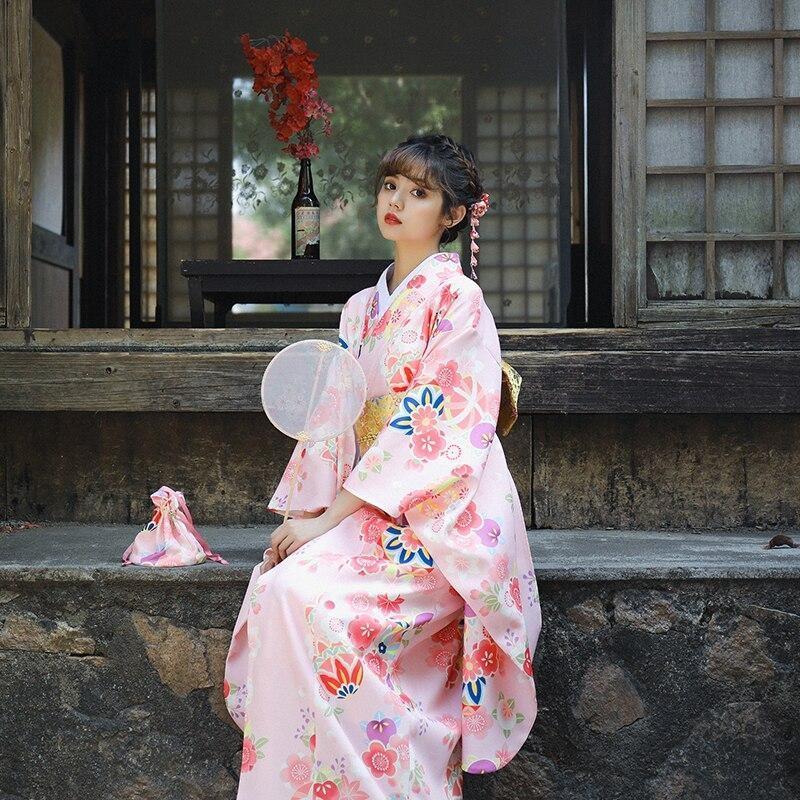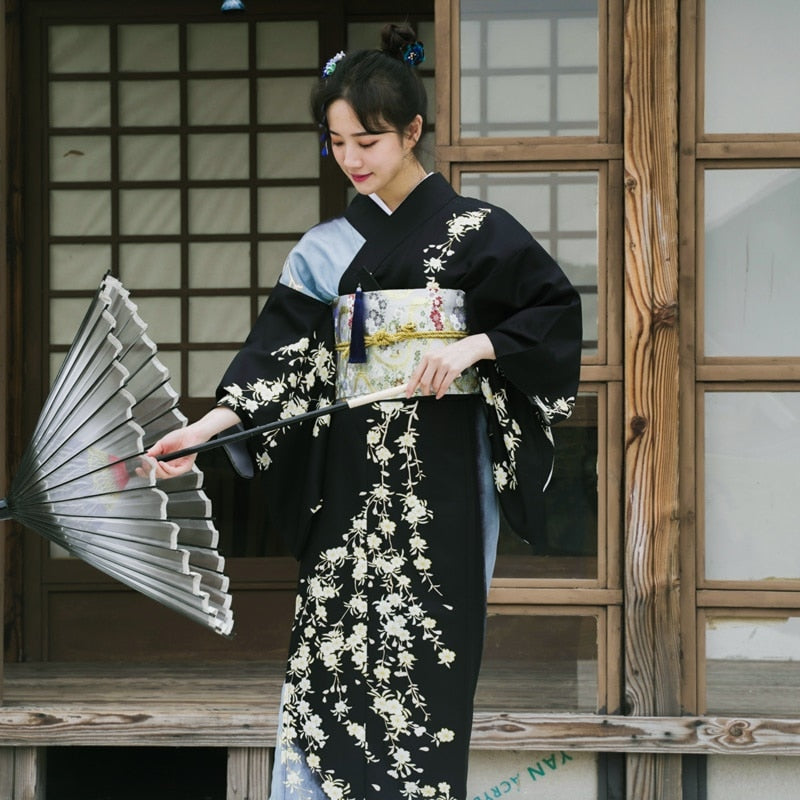The Origin and Influence of Kimono Style Dresses
Historical Roots of the Kimono
The kimono style dress, with its origins deeply rooted in Japanese culture, has captivated the fashion world with its unique blend of tradition and modernity. The traditional kimono, which means “thing to wear,” dates back to the Heian period in Japan and signifies an important cultural garment worn during special occasions and ceremonies. This style has evolved over centuries, but its essence remains unchanged: long, flowing sleeves, a wrapped front closure, and a belted waist, usually represented by an obi.
Global Fashion’s Embrace of Kimono-Inspired Designs
Today, kimono style dresses have transcended their origins to become a global fashion staple, admired for their simplicity and sophisticated aesthetic. Western designers often draw inspiration from the traditional silhouette and patterns of the kimono, creating dresses that blend Eastern design elements with contemporary fashion sensibilities. These adaptations maintain the respect for the original garments’ elegance and craftsmanship, presenting a wearable form that honors its heritage while appealing to modern fashion enthusiasts worldwide.

The Versatility of the Kimono Style Dress
Formal and Casual Adaptations
One of the most remarkable features of the kimono style dress is its versatility. Elegant versions utilize luxurious fabrics like silk and brocade, making them perfect for formal events like weddings or galas. Meanwhile, casual interpretations fashioned from cotton or linen offer a laid-back but chic option for everyday wear. The silhouette’s fluid lines and adaptable form allow for various styles, from maxi-length designs to shorter, more playful iterations.
Seasonal Wear and Layering
How to wear a kimono with a dress? Kimono style dresses seamlessly adapt to different seasons and climates. In warmer months, lighter fabrics and floral prints mirror the freshness of spring and summer. As the weather cools, layering a kimono dress over tights or pairing it with boots can offer a stylish and practical cold-weather ensemble. The dress’s open-front nature makes it an excellent layering piece, granting flexibility and functionality to its wearer’s wardrobe regardless of the season.
Design Elements and Characteristics
Sleek Silhouettes and Wrap Designs
The sleek silhouette of kimono style dresses is a nod to the traditional, straight-lined kimono structure. This design often includes a wrap front that can be adjusted to fit various body shapes, highlighting the waist with a tie or belted detail. The wrap feature is not only aesthetically appealing but also practical, as it allows for customization of fit, providing comfort and tailored elegance to the wearer.
The Beauty of Kimono Sleeves and Prints
Kimono sleeves are another distinctive element, often wide and flowing, adding a graceful movement to the dress. These sleeves vary in length, contributing to the garment’s dramatic flair. Patterns and prints on kimono style dresses often draw from traditional Japanese motifs, such as florals, cranes, and waves, which are rich in symbolism. Contemporary designs may incorporate abstract or minimalistic designs, offering a range of prints to suit various tastes.

Crafting and Caring for Kimono Style Dresses
Attention to Fabric and Construction
Creating a kimono style dress for women requires careful attention to fabric choice and construction details. High-quality materials ensure the garment drapes beautifully and withstands wear over time. Precise cutting and stitching are pivotal to maintain the integrity of the design, particularly in areas like the collar and sleeves where the structure is critical. Seamsters with an understanding of traditional techniques can imbue modern adaptations with authenticity and durability.
Maintenance and Preservation
To keep kimono style dresses looking their best, proper care is essential. Many will benefit from gentle hand washing or dry cleaning, especially those made from delicate fabrics like silk. Storage should involve hanging the dress on a padded hanger to preserve its shape and prevent stretching. By following care instructions diligently, owners can ensure that their kimono style dresses endure as timeless pieces in their fashion repertoire.
Incorporating Kimono Style Dresses into Contemporary Fashion
Fusing Eastern and Western Trends
Kimono style dresses offer a unique opportunity to fuse Eastern aesthetics with Western fashion trends. This blend results in an eclectic style that’s both worldly and sophisticated. It’s not uncommon to see such dresses paired with modern accessories like leather belts, statement jewelry, or bold bags, creating looks that are enriched by a mix of cultural influences.
Accessibility and Inclusivity in Design
The widely flattering cut of the kimono style dress makes it accessible to and inclusive of diverse body types. Its wraparound nature suits a range of sizes, providing a customizable fit that embraces different silhouettes. This universality has helped propel the kimono style dress into the limelight as a beloved choice for women who value both beauty and adaptability in their clothing.
The Cultural Impact and Future Trends of Kimono Style Dresses
Preserving Cultural Heritage Through Fashion
As kimono style dresses gain popularity, they also play a role in preserving and celebrating cultural heritage. Wearing these dresses can prompt an appreciation for traditional Japanese garments and the history associated with them. Fashion serves as a medium through which stories and traditions find new expression, keeping the spirit of the original kimono alive in contemporary culture.

Anticipating Evolving Interpretations
The future of kimono style dresses appears bright as designers continue to experiment with this inspired form. Up-and-coming designers may inject bold, cutting-edge modifications, while others may focus on sustainable production methods to reinterpret the kimono dress. Despite the changes, one thing is likely to remain constant: the kimono style dress’s ability to encapsulate grace and comfort will continue to make it a sought-after piece in global fashion landscapes.
In summary, the kimono style dress is a testament to the enduring influence of traditional Japanese fashion on contemporary clothing design. Its versatility, elegant silhouette, and distinctive sleeves and prints have captivated audiences worldwide, making it a staple for any fashion connoisseur. Through conscientious crafting, caring, and integrating into current trends, kimono style dresses have solidified their place as garments that honor their historical origins while evolving to meet the needs and tastes of modern wearers. As the fashion world continues to advance, the kimono style dress undoubtedly will adapt, maintaining its essence while contributing to the rich tapestry of cultural garments reimagined for future generations.
The Role of Social Media and Influencers
The rise of social media and influencers has significantly impacted the popularity of kimono style dresses in contemporary fashion. Instagram, Pinterest, and fashion blogs are rich with imagery of these garments styled in various ways, providing endless inspiration for those looking to add a kimono dress to their wardrobe. Influencers often showcase how to wear these dresses for different occasions, demonstrating their versatility and flair for fashion. Followers are encouraged to experiment with their styles, incorporating kimono dresses into their personal looks, further propelling the trend.
The Ethical Fashion Movement and Kimono Dresses
As consumers become more environmentally conscious, the ethical fashion movement has come to the forefront, and kimono style dresses are part of this shift. Designers and brands increasingly use sustainable fabrics and ethical manufacturing processes to produce these garments. The longevity and timelessness of kimono style dresses align with the principles of slow fashion, as these pieces are often kept and cherished for longer periods rather than following fast-fashion trends. This encourages consumers to make mindful choices that are not only stylish but also responsible.
